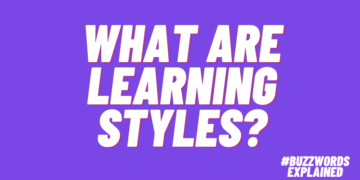Do you ever watch old movies? And we don’t mean from 2010!
Like way back, before the mid-1960s, when most movies were filmed in black and white and acting styles were different.
What do you think are the benefits of watching old films?
In “Why These 10 Old Movies Are Really Worth Your Time,” John McWhorter writes about why watching films from the past is valuable for today’s young people:
For someone with a deep curiosity about old movies, the 1980s were a great time to come of age. Home video was just coming in, and revival houses were still common in big cities. I watched everything I could.
That was all it took for me to get myself pretty well grounded. Going on half a century later, it would be much harder for a young person to do. I had only about 40 years of sound films to catch up with; today a kid has almost 90, with so many more films now released each year than ever in the past. Add in the ease of streaming, and the result is a strong gravitational pull toward the new or recent. Cinema’s past can feel very far away.
Lately I have been thinking about the role that film literacy should play in the lives of educated, curious people — and, on that basis, which old movies I want my children to have caught at least once. By old, I mean ancient: movies from before 1965, when most film was in black-and-white, acting styles were different and the Hays Code was still in force.
The merits of exposing kids to movies their grandparents or great-grandparents watched will not be obvious to everyone. Certainly it will not be obvious to most kids. But good films are as worthy of their time as good books, and the best of them are as artistically rich as the finest literature our nation has produced. With film as well as books, in the wise words of someone I once knew, “You know, the thing about the classics is, they’re good!”
Old movies are a useful way for kids to see how the past was different, with humans as intelligent as we are, living life as intensely as we do, and yet doing so under different expectations in terms of violence, the welfare state, racial, gender and class hierarchy and more. I especially value that an old movie can discourage the tempting idea that America’s path is stasis and regression, rather than progress. It’s hard not to see our lives now, imperfections acknowledged, as vastly beyond the America in which Black people were conceived of as only servants, Native Americans only as disposable background figures with the temerity to resent white people’s encroachment, and women dreaming of nothing but the kitchen and the nursery.
Old movies are also a lesson in the history of popular music. Kids can experience first hand the fact that music sounded different way back when, but can still be nice to get a listen to. Seeing the songs of a musical expertly performed is a better way to learn that than just hearing the records played through the ear. This also gives kids a look at how people once danced: Even toddlers would be transfixed watching the Nicholas Brothers’ acrobatic dancing in “Stormy Weather.”
Mr. McWhorter shares a list of 10 great “Sunday afternoon possibilities” for young people to enjoy. Here are three of them:
“Singin’ in the Rain” (1952). A smashing collection of songs perfectly executed, a story that keeps you on the edge of your seat, plus some dandy history about the dawn of sound film. (And much more appealing than so many other MGM musicals of this era, which I find to be too rosy-cheeked and too cheesy, with their birthday cake kind of color.) All sentient beings should see this. My girls loved it.
“Casablanca” (1942). The quintessential “old movie” drama, which no one expected to be a hit but floors us still today because of the magic synergy of Ingrid Bergman and Humphrey Bogart. Tell your kids about the lift shoes that Bogart wore to seem taller than Bergman. And point out the lines they’ll hear again and again: “Play it again, Sam” — actually, no one says exactly that in the movie, but still — “Don’t amount to a hill of beans,” “Shocked, shocked!”
“Stormy Weather” (1943). One of the rare times when a studio in the old days gathered a passel of Black pop artists at the top of their games. The result includes Lena Horne’s deathless rendition of the title song and Fats Waller as funny now as he was then. I loved this movie (which only pretends to have a plot) when I watched it at 8 with my mother. Other kids would, too.
Students, read the entire essay and then tell us:
Are you a film lover? What role do movies play in your life? Have any had a big impact on you?
Do you like old movies? Why or why not? If so, do you have any favorites?
Mr. McWhorter says that, for kids today, there is a “strong gravitational pull” toward new or recent films and away from cinema’s past. Do you agree? Why do you think so many young people have veered away from Hollywood classics?
What do you think of Mr. McWhorter’s list of pre-1965 movie recommendations? Have you seen any? Which, if any, would you like to check out?
Mr. McWhorter argues that “good films are as worthy of their time as good books, and the best of them are as artistically rich as the finest literature our nation has produced.” How persuasive is his case for the merits of exposing children to movies their grandparents or great-grandparents watched? Do you think all young people should learn cinema history and film literacy? Should the classics of the silver screen be taught alongside the classics of literature?
McWhorter writes, “Old movies are a useful way for kids to see how the past was different.” What can you tell about American life by watching older movies? What other lessons might these films offer?
What older movies would you recommend to your peers? What would be your elevator pitch to convince them that these films are worth their time?
Students 13 and older in the United States and Britain, and 16 and older elsewhere, are invited to comment. All comments are moderated by the Learning Network staff, but please keep in mind that once your comment is accepted, it will be made public and may appear in print.
Find more Student Opinion questions here. Teachers, check out this guide to learn how you can incorporate these prompts into your classroom.



















